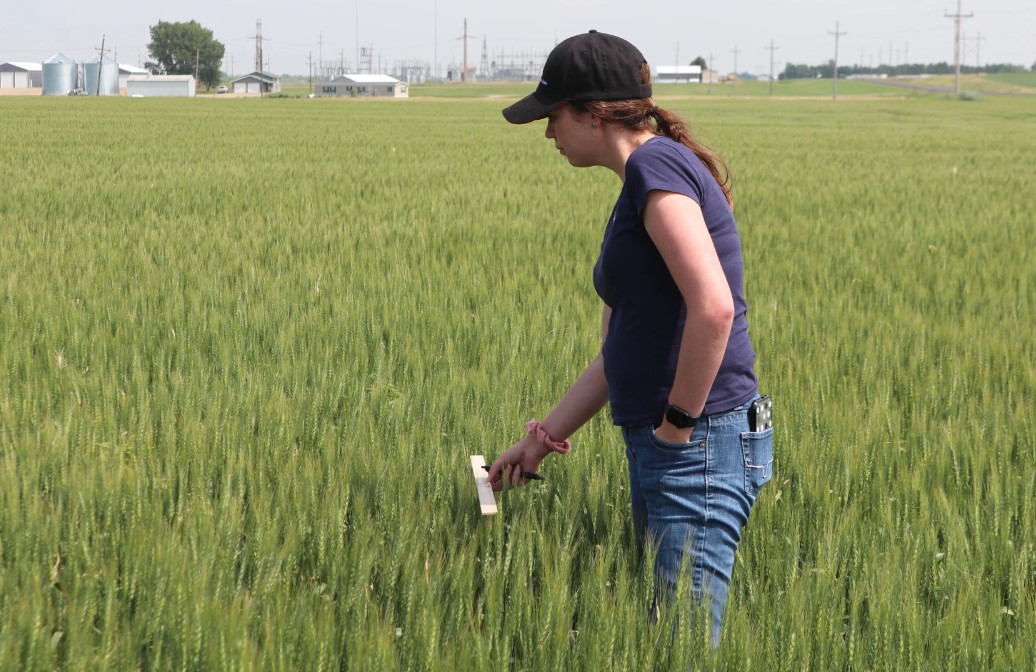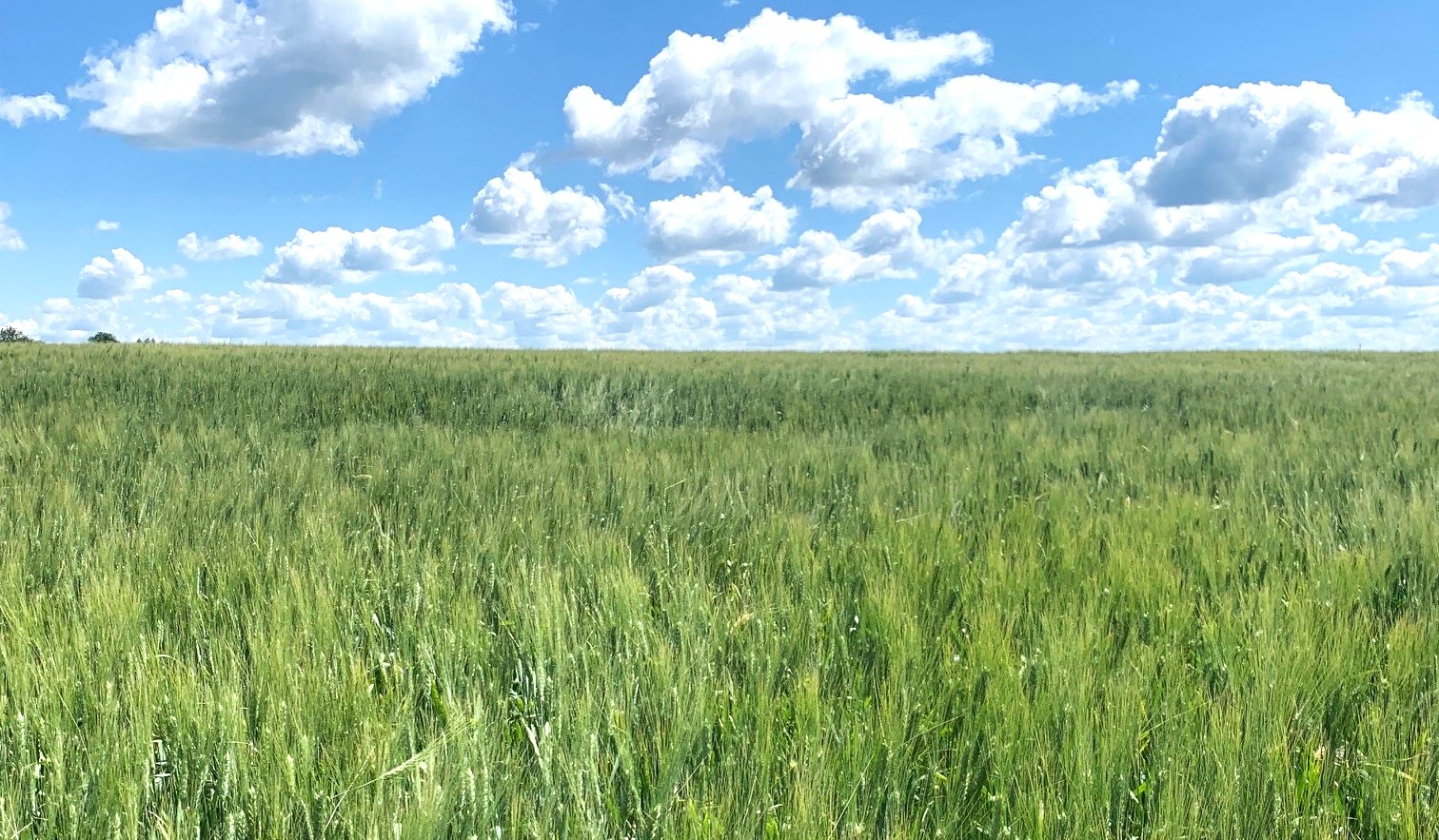Spring Wheat Tour Scouts Say the Crop Has Excellent Potential
The 2022 Hard Spring Wheat Tour sponsored by the Wheat Quality Council ended July 28 with a very positive outlook for the U.S. hard red spring (HRS) and durum crop. The wheat is behind its normal development at this time of year because of late planting, but more than 50 industry participants determined a total weighted average HRS yield estimate of 49.1 bushels per acre (about 3.3 metric tons per hectare). The weighted average durum yield was 39 bu/a, or about 2.7 MT/ha.
Those estimates are the highest since the spring wheat tour estimated an average HRS yield of 49.9 bu/a in 2015. Following the drought-ravaged 2021 crop, the much-improved potential of this crop is welcome news to spring wheat farmers. Harvest is not expected to start for at least 3 weeks, depending on weather conditions but the industry is cautiously optimistic.

Measuring for Yield Potential. USW Assistant Director, West Coast Office, Tyllor Ledford measures a section of a North Dakota HRS crop to start calculating yield potential on the 2022 Hard Spring Wheat tour. Photo by Jeff Beach, AgWeek.
Neal Fisher, Executive Director of the North Dakota Wheat Commission told Progressive Farmer/DTN that there is a lot of potential “if we do not have an early frost of rain at harvest, and we can keep diseases [and pests] at bay.” The spring wheat tour scouts did see evidence of grasshopper damage in the crop, pest pressure likely resulting from the drought last year.
Happy Customer
In the same article, a representative of a large U.S. snack food company said participating in the spring wheat tour helped him understand future [supply] risks. He added that he was happy with the yield potential and thought the wheat quality “was great.”
Buyers and Farmers Together
U.S. Wheat Associates (USW) Assistant Director, West Coast Office, Tyllor Ledford participated in the 2022 spring wheat tour. Dave Green, Executive Director, Wheat Quality Council, noted that having representatives from milling and wheat food processing industries participate with farmers and other stakeholders is a crucial part of the annual tours.
The real value of the tour said one farmer is connecting with buyers and end-users in the fields to show them how farmers manage their crops for the best potential yield and functional quality.


